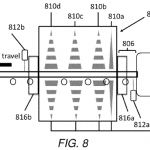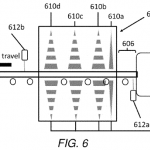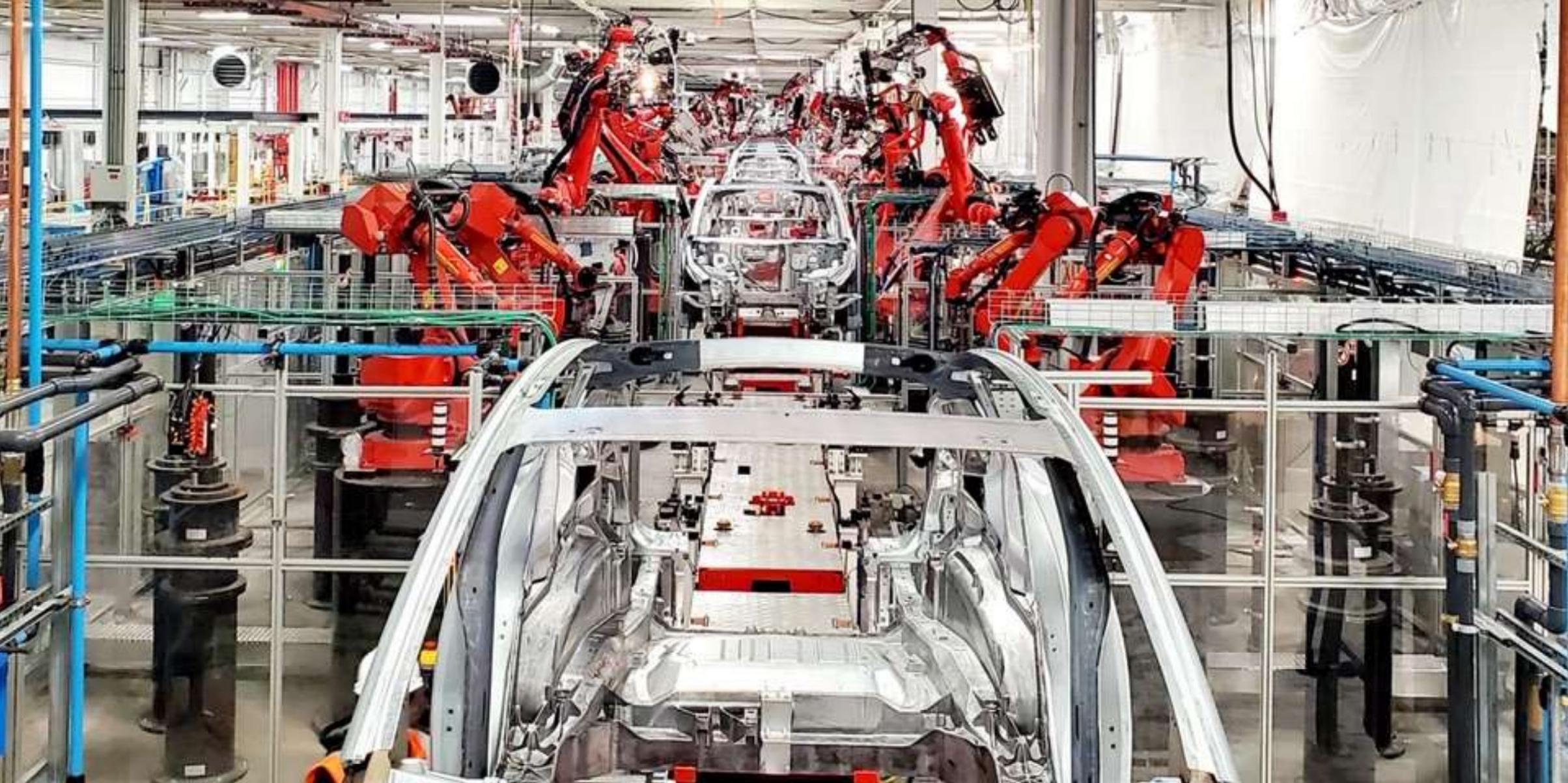

Investor's Corner
Tesla patents aluminum “spray quench” process for molecular-level strengthening
Tesla has submitted a patent that describes a new, more effective cooling process for manufacturing high-strength aluminum components to be used in its product line.
The patent entitled, “System and Method for Facilitating Pulsed Spray Quench of Extruded Objects”, describes a quenching process that aims to increase the strength, rigidity, and energy absorption of aluminum alloy components. A multi-way spray nozzle system would cool extruded aluminum with an atomized spray of liquid.
“A system includes a billet die at a proximal end configured to accept a billet and form an extrudate, a quench chamber located adjacent to the billet die for receiving the extrudate and comprising at least one pulsed width modulation (PWM) atomizing spray nozzle and a control module in communication with the at least one PWM atomizing spray nozzle and configured to independently control a liquid pressure, a gas pressure, a spray frequency, a duty cycle and flow rate of each at least one PWM atomizing spray nozzle,” reads the patent abstract.
Vehicles today use 6XXX aluminum alloys, which make up the front and rear bumpers, side and back steps, and knee bolsters of a car, the Kobelco Technology Review stated. Tesla also indicates within the patent that it uses 6XXX alloys for its vehicles. After these parts are extruded, they enter a quenching process, which is simply the process of cooling the metal after it has been heated.
Currently, Tesla utilizes a quenching process that involves cooling recently extruded aluminum alloys by soaking the parts in water. This process of quenching is recognized as “quick cooling.” While other cooling means are available, such as air cooling and furnace cooling, soaking the parts in water is the most time-effective method for automotive manufacturing.
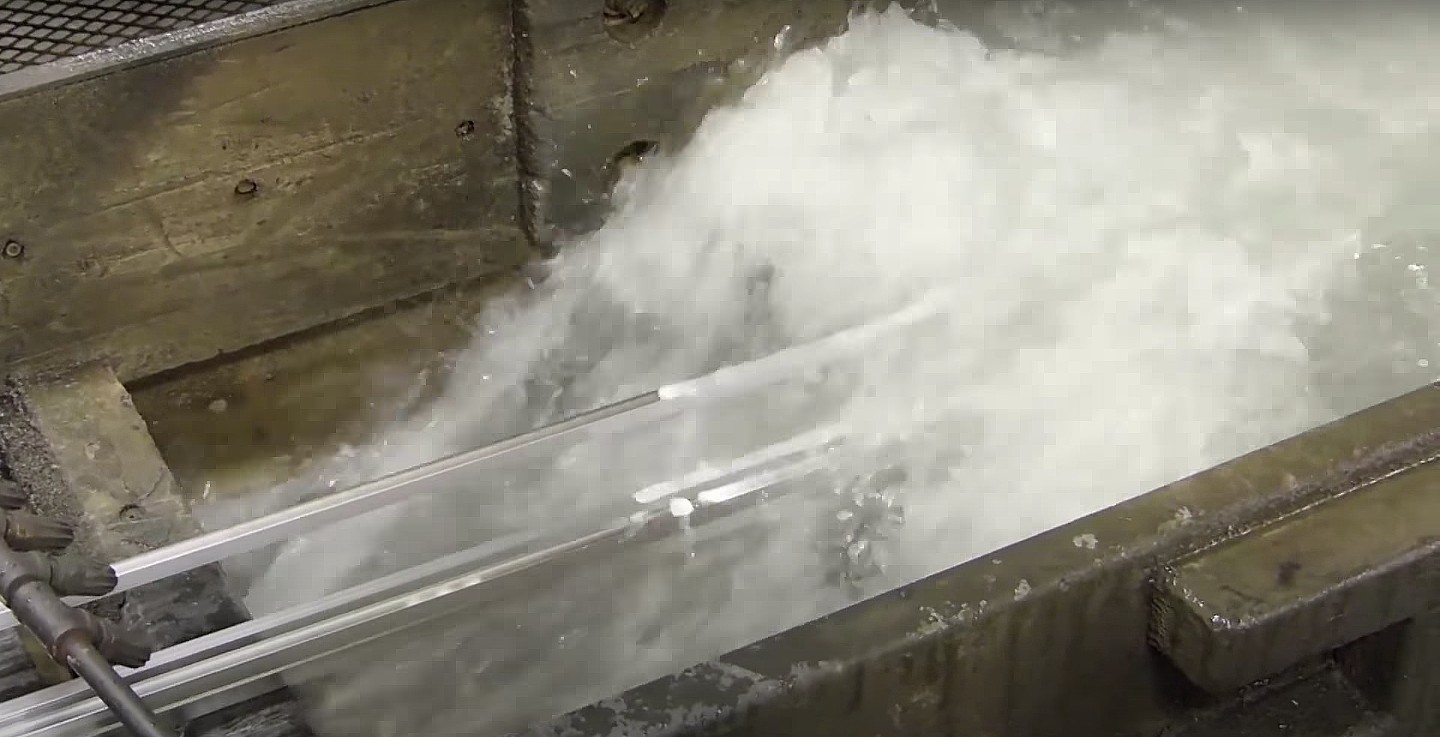
However, Tesla’s patent recognizes the adverse effects that quick cooling aluminum alloy parts can have on the structural integrity of the metal. Quick-cooling can not only lead to deformation and warping of metal parts, but things can change chemically as well.
Magnesium silicide, or Mg2Si, is present in these aluminum alloy parts, and quick cooling them can inhibit the compound’s ability to set in the metal. Without the proper setting of Mg2Si by quick-cooling the aluminum alloy in water, the metal requires a higher extrusion pressure and becomes more sensitive to heat, according to Light Metals 2014. The combination of these two properties can effectively compromise the mechanical properties of the final product, making the frame of the vehicle lose strength through the manufacturing process.
Tesla plans to utilize a multi-way spraying system to cool extruded aluminum parts, eliminating the soaking process that is used by so many manufacturers of aluminum alloy. In the patent, the company describes a quenching system that would spray newly extruded metals at varying rates depending on the size of the part. Between one half-gallon and 10 gallons of water per minute would cool the metal in question.
- Tesla’s described cooling process. (Credit: U.S. Patent Office)
- Tesla’s described cooling process. (Credit: U.S. Patent Office)
Two pyrometers would be placed at both the proximal and distal ends of the quench chamber. These would hold the responsibility of maintaining the metal’s temperature through the quenching process. The pyrometers would communicate with the system to ensure proper cooling temperatures, making sure the aluminum does not cool too quickly, allowing the Mg2Si to set. In conjunction with the temperature control, spray frequency, liquid pressure, gas pressure, and flow rate will also be monitored to ensure maximum strength after extradition is complete.
Tesla’s recognition of the flaws in quick-cooling extruded metals indicates the company’s realization that increased strength of a car’s frame could improve with a more efficient cooling technique.
In the teardown of the Model Y, Sandy Munro complimented Tesla’s use of what he called the “aluminum rear crush plate.” The piece is located at the trunk hatch and is designed to fold in the event of a rear-impact. The part saves the sides of the body from being compromised in a crash, which can ultimately total the vehicle if the chassis bends excessively.
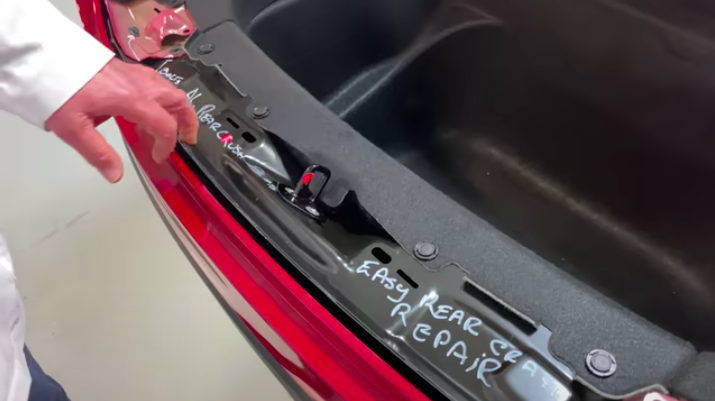
While the crush plate is durable and prevents excessive damage to the body of the Model Y, the quick-cooling process used during manufacturing could ultimately make the crush plate less sustainable than what it could be. Not to mention, the front bumper, rear bumper, side and back steps, and knee bolsters are also made of aluminum. Using a different cooling technique could eventually lead to an even safer Tesla vehicle, which already has many five-star crash safety ratings from several organizations located around the world.
Read Tesla’s patent for a new aluminum cooling process below.
Tesla SYSTEM AND METHOD FOR FACILITATING PULSED SPRAY QUENCH OF EXTRUDED OBJECTS by Joey Klender on Scribd
Investor's Corner
Tesla could save $2.5B by replacing 10% of staff with Optimus: Morgan Stanley
Jonas assigned each robot a net present value (NPV) of $200,000.
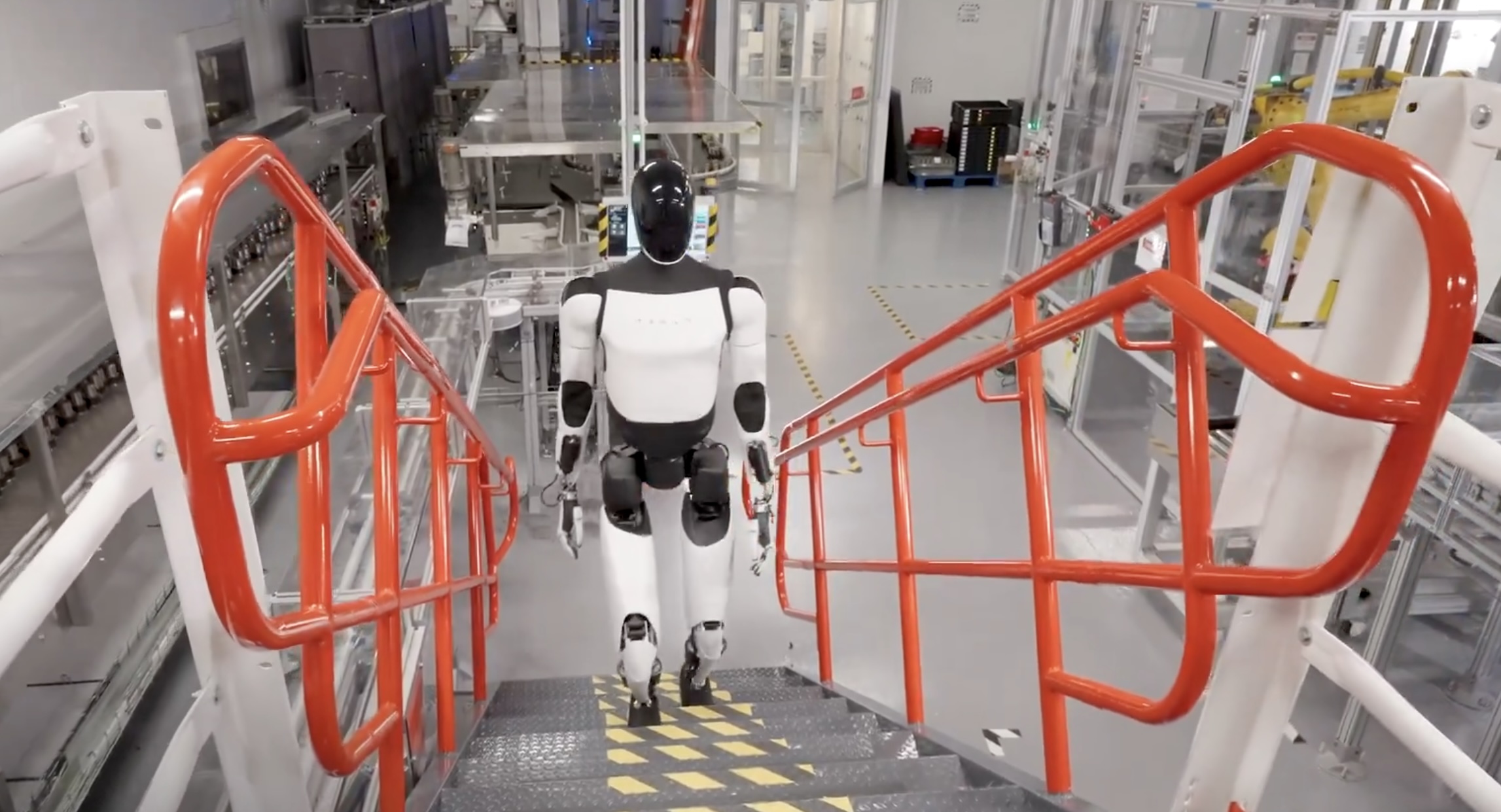
Tesla’s (NASDAQ:TSLA) near-term outlook may be clouded by political controversies and regulatory headwinds, but Morgan Stanley analyst Adam Jonas sees a glimmer of opportunity for the electric vehicle maker.
In a new note, the Morgan Stanley analyst estimated that Tesla could save $2.5 billion by replacing just 10% of its workforce with its Optimus robots, assigning each robot a net present value (NPV) of $200,000.
Morgan Stanley highlights Optimus’ savings potential
Jonas highlighted the potential savings on Tesla’s workforce of 125,665 employees in his note, suggesting that the utilization of Optimus robots could significantly reduce labor costs. The analyst’s note arrived shortly after Tesla reported Q2 2025 deliveries of 384,122 vehicles, which came close to Morgan Stanley’s estimate and slightly under the consensus of 385,086.
“Tesla has 125,665 employees worldwide (year-end 2024). On our calculations, a 10% substitution to humanoid at approximately ($200k NPV/humanoid) could be worth approximately $2.5bn,” Jonas wrote, as noted by Street Insider.
Jonas also issued some caution on Tesla Energy, whose battery storage deployments were flat year over year at 9.6 GWh. Morgan Stanley had expected Tesla Energy to post battery storage deployments of 14 GWh in the second quarter.
Musk’s political ambitions
The backdrop to Jonas’ note included Elon Musk’s involvement in U.S. politics. The Tesla CEO recently floated the idea of launching a new political party, following a poll on X that showed support for the idea. Though a widely circulated FEC filing was labeled false by Musk, the CEO does seem intent on establishing a third political party in the United States.
Jonas cautioned that Musk’s political efforts could divert attention and resources from Tesla’s core operations, adding near-term pressure on TSLA stock. “We believe investors should be prepared for further devotion of resources (financial, time/attention) in the direction of Mr. Musk’s political priorities which may add further near-term pressure to TSLA shares,” Jonas stated.
Investor's Corner
Two Tesla bulls share differing insights on Elon Musk, the Board, and politics
Two noted Tesla bulls have shared differing views on the recent activities of CEO Elon Musk and the company’s leadership.

Two noted Tesla (NASDAQ:TSLA) bulls have shared differing views on the recent activities of CEO Elon Musk and the company’s leadership.
While Wedbush analyst Dan Ives called on Tesla’s board to take concrete steps to ensure Musk remains focused on the EV maker, longtime Tesla supporter Cathie Wood of Ark Invest reaffirmed her confidence in the CEO and the company’s leadership.
Ives warns of distraction risk amid crucial growth phase
In a recent note, Ives stated that Tesla is at a critical point in its history, as the company is transitioning from an EV maker towards an entity that is more focused on autonomous driving and robotics. He then noted that the Board of Directors should “act now” and establish formal boundaries around Musk’s political activities, which could be a headwind on TSLA stock.
Ives laid out a three-point plan that he believes could ensure that the electric vehicle maker is led with proper leadership until the end of the decade. First off, the analyst noted that a new “incentive-driven pay package for Musk as CEO that increases his ownership of Tesla up to ~25% voting power” is necessary. He also stated that the Board should establish clear guidelines for how much time Musk must devote to Tesla operations in order to receive his compensation, and a dedicated oversight committee must be formed to monitor the CEO’s political activities.
Ives, however, highlighted that Tesla should move forward with Musk at its helm. “We urge the Board to act now and move the Tesla story forward with Musk as CEO,” he wrote, reiterating its Outperform rating on Tesla stock and $500 per share price target.
Tesla CEO Elon Musk has responded to Ives’ suggestions with a brief comment on X. “Shut up, Dan,” Musk wrote.
Cathie Wood reiterates trust in Musk and Tesla board
Meanwhile, Ark Investment Management founder Cathie Wood expressed little concern over Musk’s latest controversies. In an interview with Bloomberg Television, Wood said, “We do trust the board and the board’s instincts here and we stay out of politics.” She also noted that Ark has navigated Musk-related headlines since it first invested in Tesla.
Wood also pointed to Musk’s recent move to oversee Tesla’s sales operations in the U.S. and Europe as evidence of his renewed focus in the electric vehicle maker. “When he puts his mind on something, he usually gets the job done,” she said. “So I think he’s much less distracted now than he was, let’s say, in the White House 24/7,” she said.
TSLA stock is down roughly 25% year-to-date but has gained about 19% over the past 12 months, as noted in a StocksTwits report.
Investor's Corner
Cantor Fitzgerald maintains Tesla (TSLA) ‘Overweight’ rating amid Q2 2025 deliveries
Cantor Fitzgerald is holding firm on its bullish stance for the electric vehicle maker.
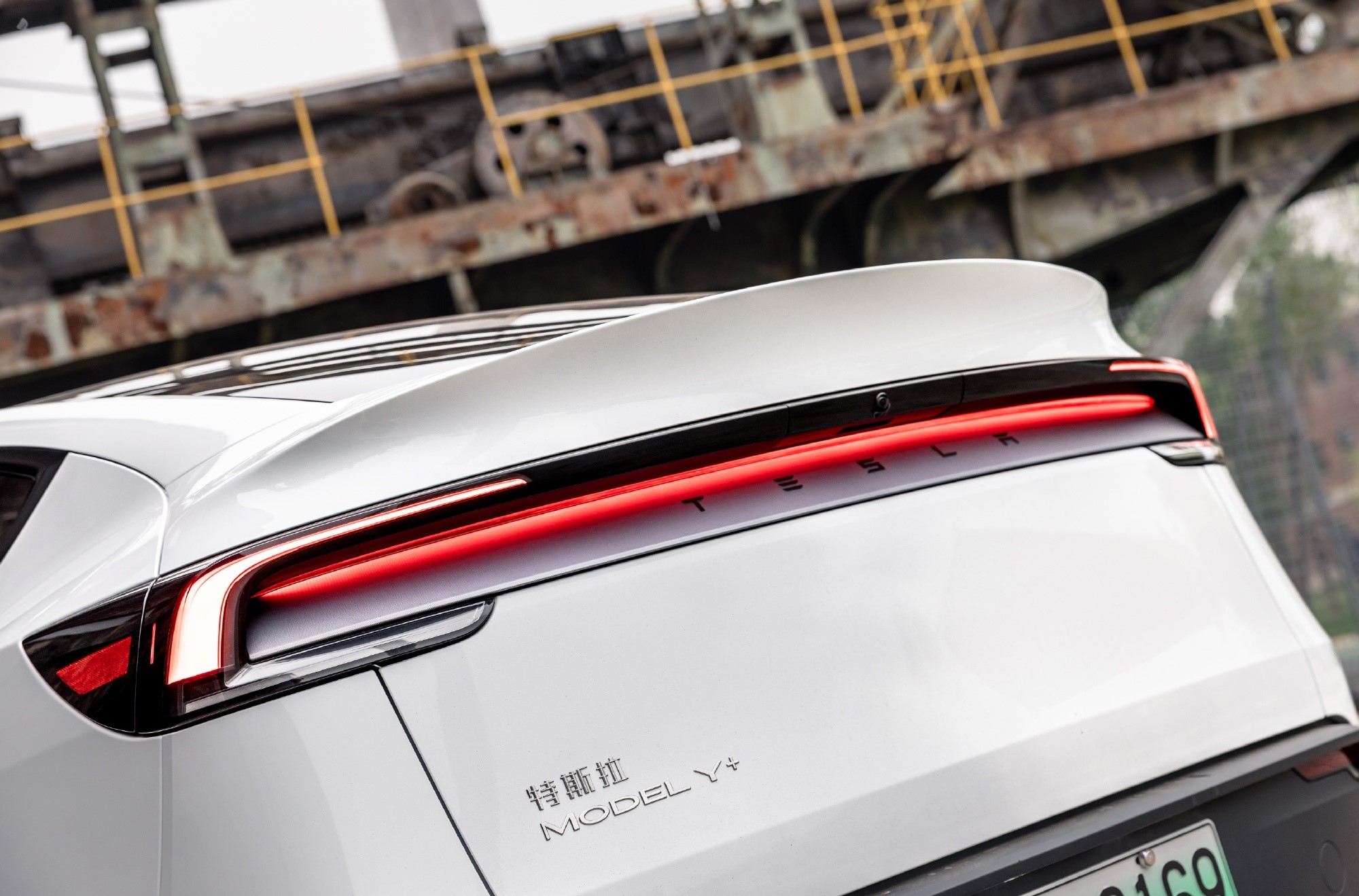
Cantor Fitzgerald is holding firm on its bullish stance for Tesla (NASDAQ: TSLA), reiterating its “Overweight” rating and $355 price target amidst the company’s release of its Q2 2025 vehicle delivery and production report.
Tesla delivered 384,122 vehicles in Q2 2025, falling below last year’s Q2 figure of 443,956 units. Despite softer demand in some countries in Europe and ongoing controversies surrounding CEO Elon Musk, the firm maintained its view that Tesla is a long-term growth story in the EV sector.
Tesla’s Q2 results
Among the 384,122 vehicles that Tesla delivered in the second quarter, 373,728 were Model 3 and Model Y. The remaining 10,394 units were attributed to the Model S, Model X, and Cybertruck. Production was largely flat year-over-year at 410,244 units.
In the energy division, Tesla deployed 9.6 GWh of energy storage in Q2, which was above last year’s 9.4 GWh. Overall, Tesla continues to hold a strong position with $95.7 billion in trailing twelve-month revenue and a 17.7% gross margin, as noted in a report from Investing.com.
Tesla’s stock is still volatile
Tesla’s market cap fell to $941 billion on Monday amid volatility that was likely caused in no small part by CEO Elon Musk’s political posts on X over the weekend. Musk has announced that he is forming the America Party to serve as a third option for voters in the United States, a decision that has earned the ire of U.S. President Donald Trump.
Despite Musk’s controversial nature, some analysts remain bullish on TSLA stock. Apart from Cantor Fitzgerald, Canaccord Genuity also reiterated its “Buy” rating on Tesla shares, with the firm highlighting the company’s positive Q2 vehicle deliveries, which exceeded its expectations by 24,000 units. Cannacord also noted that Tesla remains strong in several markets despite its year-over-year decline in deliveries.
-

 News3 days ago
News3 days agoTesla debuts hands-free Grok AI with update 2025.26: What you need to know
-

 Elon Musk1 week ago
Elon Musk1 week agoElon Musk confirms Grok 4 launch on July 9 with livestream event
-

 Elon Musk6 days ago
Elon Musk6 days agoxAI launches Grok 4 with new $300/month SuperGrok Heavy subscription
-

 News2 weeks ago
News2 weeks agoTesla Model 3 ranks as the safest new car in Europe for 2025, per Euro NCAP tests
-

 Elon Musk2 weeks ago
Elon Musk2 weeks agoxAI’s Memphis data center receives air permit despite community criticism
-

 News5 days ago
News5 days agoTesla begins Robotaxi certification push in Arizona: report
-

 Elon Musk2 weeks ago
Elon Musk2 weeks agoTesla reveals it is using AI to make factories more sustainable: here’s how
-

 Elon Musk2 weeks ago
Elon Musk2 weeks agoTesla scrambles after Musk sidekick exit, CEO takes over sales

